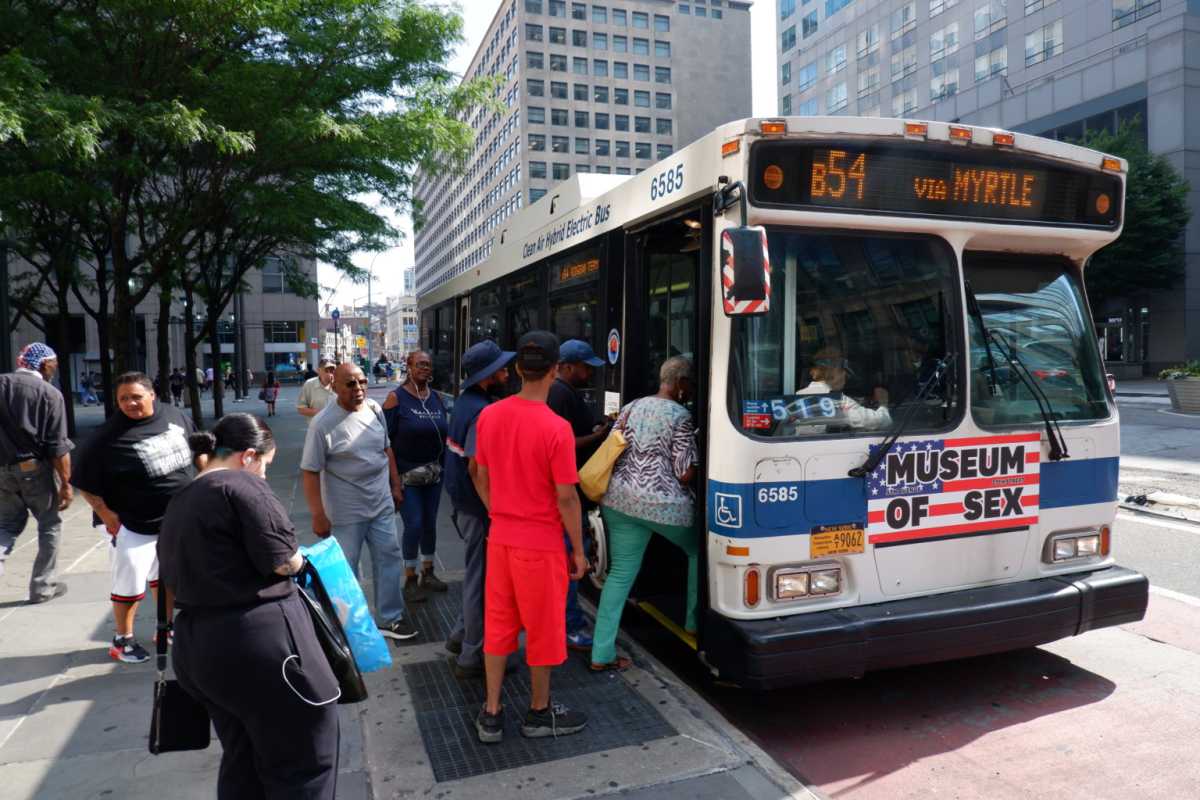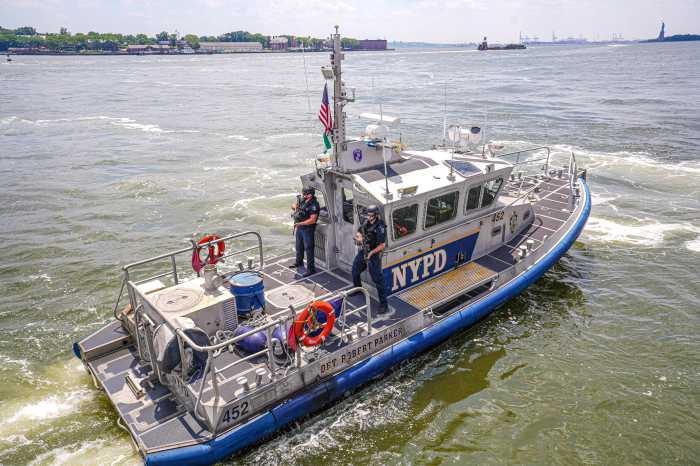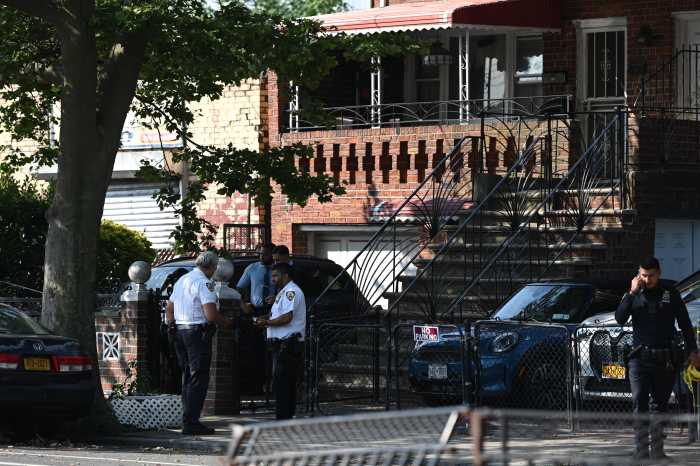City transit honchos plan to install the busway along Jay Street in Downtown Brooklyn next month, largely closing off the 0.4-mile stretch of the roadway between Livingston and Tillary streets to through traffic for cars, while upgrading the surrounding bike lanes, according to a Department of Transportation spokeswoman.
“Work for the Jay Street busway pilot is expected to begin in late August and anticipated to be fully operational in early September,” said Lolita Avila in a statement.
The five-block-long busway was originally supposed to debut in August, but agency bigwigs pushed the schedule back a month to iron out the kinks of the new transit and bike lanes along the thoroughfare, according to Avila.
“In regards to the delay, DOT has been diligently working on technical details for the busway as well as a series of protected bike lane projects in the downtown area,” she said.
The delay was first reported by the New York Post, which detailed how Mayor Bill de Blasio’s recent batch of busways were missing their schedules.
That includes Queens, where the first of the red-painted lanes for the people movers was supposed to arrive in June, but has stalled due to opposition from some local businesses and the neighborhood’s councilman Peter Koo, who appropriated Black Lives Matter references by chanting “Business Lives Matter” at a rally in that borough, according to a Streetsblog report.
In Downtown Brooklyn, DOT revealed details to local community groups and stakeholders during two July presentations, showing how Jay Street will be closed to through traffic for cars weekdays from 7 am to 7 pm.
Local access will still be available via Willoughby Street and the MetroTech Roadway underpass coming from the east, and a reconfigured Johnson Street from the west. One-way Johnson Street will flip its direction, and the city will install new protected bike lanes along that stretch of roadway.
The planned one-year pilot follows the successful project on Manhattan’s 14th Street last year and Brooklyn’s original busway on the Fulton Mall, which dates back to the 1980s.
In the Big Apple, the busway led to 14 percent more straphangers aboard the shuttles, along with allowing buses to move through their routes about three minutes faster, according to DOT data.
This story first appeared on our sister publication brooklynpaper.com.




































